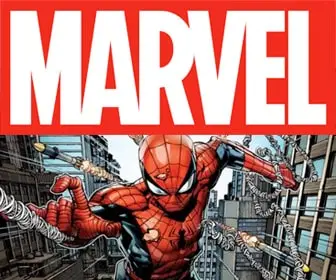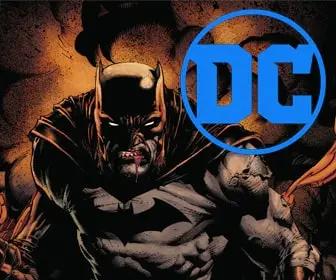
Frank Miller: Revolutionizing Comics with Dark Knight Returns and Sin City

Frank Miller is a legendary figure in the comic book industry, widely recognized for his groundbreaking contributions that have reshaped the medium. His impact on storytelling, visual aesthetics, and the portrayal of iconic characters is unparalleled. Miller’s work, particularly his seminal graphic novels such as “The Dark Knight Returns” and “Sin City,” has transcended traditional boundaries and set new standards for narrative depth and artistic expression. His gritty and uncompromising approach, coupled with his distinctive visual style, has influenced countless creators and left an indelible mark on the industry. Miller’s contributions continue to be celebrated, sparking critical discourse and cementing his position as one of the most influential comic book creators of all time.
Early Life
Frank Miller was born on January 27, 1957, in Olney, Maryland. From an early age, he displayed a passion for storytelling and drawing, which eventually led him to pursue a career in the comic book industry. Miller’s influences range from classic literature, film noir, Japanese manga, to the works of comic book pioneers like Will Eisner and Jack Kirby.
In his formative years, Miller attended the School of Visual Arts in New York City, where he honed his artistic skills and immersed himself in the city’s vibrant comic book scene. He began his professional career in the late 1970s, working for Gold Key Comics and Marvel Comics. It was during his time at Marvel that Miller gained recognition for his work on titles like “Daredevil” and “The Incredible Hulk,” showcasing his unique storytelling abilities and dynamic art style.
Breakthroughs
Miller’s breakthrough came in the 1980s when he collaborated with writer Roger McKenzie on the “Daredevil” series, revolutionizing the character and introducing a darker, grittier tone that would become his trademark. This acclaimed run on “Daredevil” laid the foundation for his future success and cemented his reputation as a visionary creator.
“Ronin” is a groundbreaking six-issue limited series written and illustrated by Frank Miller, published by DC Comics in 1983. The series combines elements of cyberpunk, samurai lore, and dystopian futures, creating a unique and visually stunning narrative. Set in a futuristic New York City, “Ronin” follows the story of a masterless samurai warrior who is reincarnated in a post-apocalyptic world to seek revenge against his ancient enemy.
Released in 1986, “The Dark Knight Returns” is a seminal work that reimagined Batman as a gritty, older vigilante returning to protect a deteriorating Gotham City. Miller’s masterful storytelling, coupled with his bold and atmospheric artwork, propelled the graphic novel to critical acclaim and commercial success. It revitalized the Batman character, ushering in a new era of darker and more psychologically complex superhero narratives.
“Sin City”: Miller’s neo-noir crime series, “Sin City,” debuted in the early 1990s and showcased his distinctive visual style and narrative approach. Set in a dark and corrupt city, the series weaves interconnected stories of crime, revenge, and redemption. Miller’s stark black-and-white artwork, infused with splashes of vibrant color, perfectly captured the gritty and morally ambiguous atmosphere of the Sin City universe.

“300” is a highly influential graphic novel created by Frank Miller, published by Dark Horse Comics in 1998. This epic tale recounts the Battle of Thermopylae, where 300 Spartan warriors led by King Leonidas fought against the massive Persian army of Xerxes I. Miller’s unique storytelling style and bold artwork bring the historical events to life with a stylized and cinematic flair.
Influence on Filmmaking: Miller’s unique visual style and cinematic storytelling techniques have had a significant impact on the world of filmmaking. Directors such as Robert Rodriguez and Zack Snyder have adapted his works, including “Sin City” and “300,” into highly stylized and visually striking films that pay homage to Miller’s original artwork.
Hollywood
Frank Miller’s impact extends beyond the comic book medium, as he has made notable contributions to the movie industry as well. Known for his distinct visual style and compelling storytelling, Miller has successfully transitioned his unique artistic vision onto the big screen. He collaborated with director Robert Rodriguez to co-direct the film adaptation of his graphic novel “Sin City” in 2005, which brought his noir-inspired world to life with remarkable accuracy. Miller’s involvement as a co-director allowed him to maintain creative control and ensure that the film stayed true to his original vision.
In addition to “Sin City,” Miller also had a significant influence on the cinematic portrayal of Batman. His graphic novel “The Dark Knight Returns” inspired a new generation of filmmakers and became a major influence on the highly acclaimed “The Dark Knight” trilogy directed by Christopher Nolan. Miller’s dark and gritty interpretation of Batman’s character and the morally complex world he inhabits resonated with audiences and helped redefine the superhero genre in film.
Frank Miller’s foray into the movie industry demonstrates his ability to seamlessly translate his distinctive style and narrative sensibilities from the pages of comics to the screen. His impact can be felt through the visual aesthetics, storytelling techniques, and thematic depth found in many of the films inspired by his work. Miller’s contributions have not only solidified his status as a comic book legend but have also left an indelible mark on the world of cinema.
The Dark Knight
Frank Miller’s “The Dark Knight Returns” is a groundbreaking graphic novel that redefined the character of Batman and revitalized the superhero genre as a whole. Released in 1986, the story takes place in a dystopian future where an aging Bruce Wayne comes out of retirement to once again don the cape and cowl. Miller’s take on Batman is gritty, intense, and psychologically complex, presenting a darker and more realistic portrayal of the iconic vigilante.

One of the key aspects that sets “The Dark Knight Returns” apart is Miller’s exploration of Batman’s inner turmoil and the complexities of his character. The story delves into Bruce Wayne’s struggle with aging, mortality, and the enduring legacy of Batman. As he confronts a deteriorating Gotham City plagued by crime and corruption, Bruce grapples with his own inner demons and the moral implications of his vigilantism. Miller’s masterful storytelling allows readers to deeply empathize with Batman’s internal struggles and witness the depths of his determination and resilience.
Visually, “The Dark Knight Returns” is a tour de force. Miller’s distinctive artwork, with its bold lines, intense shadows, and meticulous attention to detail, perfectly captures the gritty atmosphere of the story. His use of dynamic panel layouts and striking compositions adds to the narrative’s cinematic quality, creating a sense of urgency and tension. The graphic novel’s visual style has had a profound impact on the medium, influencing subsequent artists and shaping the way Batman and other characters are depicted in comics and films.
“The Dark Knight Returns” remains a seminal work that has not only left an indelible mark on Batman’s mythology but has also had a lasting impact on the comic book industry. It redefined what superhero stories could be, introducing a darker, more mature tone that resonated with audiences and helped pave the way for the complex and introspective narratives that followed. Miller’s exploration of themes such as aging, societal decay, and the blurred lines between hero and villain continues to inspire and provoke thought in readers, firmly establishing “The Dark Knight Returns” as a classic and enduring masterpiece.
Sin City
Frank Miller’s “Sin City” is a groundbreaking neo-noir crime series that transports readers into a dark and morally corrupt world. Originally published in the early 1990s, the series presents a collection of interconnecting stories set in Basin City, a grim and atmospheric urban landscape filled with crime, corruption, and moral ambiguity. Miller’s distinct visual style and gritty storytelling create a visually striking and thematically rich narrative.

One of the defining aspects of “Sin City” is Miller’s stunning black-and-white artwork, punctuated by occasional bursts of vibrant color. The stark contrast and high contrast lighting bring the city’s seedy underbelly to life, emphasizing the gritty and noir aesthetics. Miller’s use of shadows, sharp angles, and bold linework perfectly captures the essence of the characters and their morally ambiguous existence, while the exaggerated facial expressions heighten the intensity and drama of the stories.
In terms of storytelling, “Sin City” is known for its hard-boiled narratives, complex characters, and twisting plotlines. The series features a cast of morally compromised individuals, including hard-boiled private detectives, corrupt cops, femme fatales, and violent mobsters. Miller weaves together tales of revenge, betrayal, and redemption, exploring themes of corruption, power, and the dark side of human nature. The nonlinear structure of the series adds to the overall intrigue and immerses readers into the complex web of the city’s underbelly.
“Sin City” has had a profound impact on the comic book medium, influencing a new wave of noir-inspired storytelling and visual aesthetics. The series has also been adapted into a successful film directed by Robert Rodriguez, staying true to Miller’s original vision. With its compelling narratives, striking artwork, and unforgettable characters, “Sin City” stands as a testament to Frank Miller’s storytelling prowess and his ability to push the boundaries of the medium.
Significance
Frank Miller’s relevance to the comic book industry is immeasurable. Throughout his career, he has consistently pushed the boundaries of storytelling and artistic expression, leaving an indelible mark on the medium. His works have redefined characters, genres, and narrative techniques, setting new standards for visual storytelling and paving the way for a more mature and nuanced approach to comics. Miller’s innovative storytelling style, characterized by dark and gritty themes, complex characters, and atmospheric visuals, has influenced countless artists and writers, shaping the trajectory of the industry.
Miller’s contributions extend beyond his own acclaimed works. His collaborations with other creators, such as his iconic run on Marvel’s “Daredevil,” have left a lasting impact on the characters and stories that followed. Moreover, his willingness to explore diverse genres and tackle social and political issues has expanded the possibilities of what comics can achieve. By blending elements of noir, science fiction, and historical fiction, Miller has demonstrated the versatility of the medium and its ability to address complex and thought-provoking subjects.
Beyond his creative endeavors, Miller’s outspoken views and advocacy for artistic freedom have made him a significant figure in the comic book community. His influence can be seen in the broader cultural sphere, with his works often adapted into successful films and inspiring a new generation of storytellers.
Overall, Frank Miller’s relevance to the comic book industry stems from his transformative contributions as an artist, writer, and visionary. His bold and innovative approach to storytelling, coupled with his uncompromising artistic vision, has reshaped the landscape of comics and left an enduring impact that continues to resonate with readers and creators alike.











